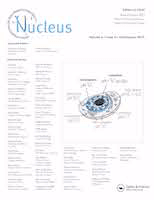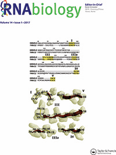
Non-coding RNA Research
Scope & Guideline
Illuminating the Roles of Non-Coding RNAs in Health and Disease
Introduction
Aims and Scopes
- Investigation of ncRNA roles in cancer biology:
The journal focuses extensively on the involvement of non-coding RNAs, such as microRNAs (miRNAs), long non-coding RNAs (lncRNAs), and circular RNAs (circRNAs), in the pathogenesis, progression, and treatment responses of various cancers. - Clinical applications and biomarker discovery:
Research published often explores the potential of ncRNAs as biomarkers for disease diagnosis, prognosis, and therapeutic targets, emphasizing their clinical relevance in conditions like cancer, diabetes, and neurodegenerative diseases. - Mechanistic insights into ncRNA functions:
A significant portion of the articles aims to elucidate the molecular mechanisms by which ncRNAs exert their effects, including their interactions with signaling pathways, gene expression regulation, and cellular processes. - Therapeutic innovations involving ncRNAs:
The journal encourages studies that investigate novel therapeutic strategies utilizing ncRNAs, including their application in drug resistance, targeted therapies, and gene editing approaches. - Interdisciplinary approaches to ncRNA research:
Research in this journal often integrates bioinformatics, molecular biology, and clinical studies, highlighting the importance of a multidisciplinary perspective in understanding the complexities of ncRNA functions.
Trending and Emerging
- Exosomal ncRNAs as diagnostic and therapeutic tools:
There is a rising trend in research focused on exosomal ncRNAs, highlighting their potential as biomarkers for various diseases and their role in intercellular communication, particularly in cancer and neurological disorders. - Circular RNAs in cancer and other diseases:
Circular RNAs are emerging as a significant area of interest, with numerous studies investigating their regulatory functions, involvement in disease mechanisms, and potential as therapeutic targets. - Interplay between ncRNAs and immune responses:
Recent publications are increasingly exploring how ncRNAs interact with immune pathways, influencing inflammation, and immune responses, which is critical for understanding diseases like cancer and autoimmune disorders. - Role of ncRNAs in metabolic disorders:
There is a growing body of work examining the contributions of ncRNAs to metabolic diseases, such as diabetes and obesity, indicating a broader application of ncRNA research beyond oncology. - Integrative multi-omics approaches:
The use of comprehensive multi-omics strategies to study ncRNAs in conjunction with genomics, proteomics, and metabolomics is on the rise, reflecting a trend towards understanding the complex regulatory networks involving ncRNAs.
Declining or Waning
- Basic research on ncRNA biogenesis:
There is a noticeable decrease in publications focusing solely on the fundamental aspects of ncRNA biogenesis, as the field has shifted towards more applied research with clinical implications. - Studies on non-coding RNAs in non-cancer diseases:
Research exploring the roles of ncRNAs in non-cancerous conditions, such as metabolic disorders or cardiovascular diseases, appears to be less frequent, possibly overshadowed by the pressing focus on cancer-related studies. - Exploratory studies without clear mechanisms:
There has been a reduction in publications that merely describe ncRNA expression profiles without delving into the underlying mechanisms or functional implications, as the field increasingly demands rigorous mechanistic insights. - Single-ncRNA studies:
Research centered on individual ncRNAs is becoming less common, with a growing preference for studies that examine networks and interactions among multiple ncRNAs and their targets, reflecting a more systems biology approach. - Overlapping themes with established journals:
Some topics related to ncRNAs, such as their roles in apoptosis or inflammation, are increasingly published in more specialized journals, indicating a potential waning of original contributions in these areas within this journal.
Similar Journals

Nucleus
Fostering collaboration in the quest for biological knowledge.Nucleus is a distinguished academic journal published by Taylor & Francis Inc, dedicated to advancing the fields of Cell Biology and Medicine. Since its inception, the journal has gained significant recognition, achieving a Q1 ranking in both Cell Biology and Medicine (miscellaneous) categories in 2023. With a focus on innovative research that intersects molecular biology and genetics, Nucleus serves as a vital platform for researchers and professionals aiming to disseminate findings that contribute to our understanding of cellular mechanisms and their implications in health and disease. The journal's commitment to Open Access since 2018 ensures that cutting-edge research is readily available to the global community, fostering collaboration and engagement across disciplines. Located in Philadelphia, PA, Nucleus not only aims to publish high-quality articles but also aspires to influence future research directions in the biological sciences, making it an essential resource for anyone involved in the life sciences.

NUCLEOSIDES NUCLEOTIDES & NUCLEIC ACIDS
Fostering Innovation in Molecular BiologyNUCLEOSIDES NUCLEOTIDES & NUCLEIC ACIDS is a vital academic journal published by Taylor & Francis Inc, dedicated to the intricate and evolving domains of biochemistry, genetics, and molecular medicine. With an ISSN of 1525-7770 and E-ISSN of 1532-2335, this journal aims to provide a comprehensive platform for the dissemination of research findings, reviews, and methodologies related to nucleosides, nucleotides, and nucleic acids. As a research journal thriving since its inception in 2000, it reflects a diverse spectrum of studies crucial for advancing knowledge in biochemistry (ranked Q4) and genetics (Q4), while also achieving Q3 status in medicine (miscellaneous). Despite its current standing in the quartiles and Scopus rankings indicative of an emergent trajectory, the journal retains significant relevance for those delving into interdisciplinary research that intersects these fields. Researchers, professionals, and students alike can explore a plethora of original research articles, thought-provoking reviews, and updates on pioneering advances that shape our understanding of molecular biology. With its unwavering commitment to scholarly excellence, NUCLEOSIDES NUCLEOTIDES & NUCLEIC ACIDS continues to be an essential resource for those aiming to contribute to and stay informed about this pivotal area of scientific inquiry.

MOLECULAR AND CELLULAR BIOLOGY
Championing High-Impact Research in Cellular DynamicsMOLECULAR AND CELLULAR BIOLOGY, published by TAYLOR & FRANCIS INC, stands as a preeminent platform for researchers, professionals, and students engaged in the dynamic field of molecular and cellular biology. Established in 1981 and ongoing into 2024, the journal features cutting-edge research that spans across vital sub-disciplines, garnering a strong impact in its contributions to the scientific community. With an impressive Q2 ranking in Cell Biology and Q1 ranking in Molecular Biology for 2023, it consistently publishes high-quality articles that reflect the latest advancements and discoveries within the field. The journal is particularly well-regarded for its rigorous peer-review process and commitment to scientific excellence, making it an invaluable resource for those seeking to deepen their understanding of molecular mechanisms and cellular processes. Although not open access, the journal offers diverse access options for researchers to reach the latest findings. By maintaining a strong focus on biochemistry, genetics, and molecular biology, MOLECULAR AND CELLULAR BIOLOGY remains essential reading for anyone looking to contribute to or stay informed about significant developments within this pivotal area of study.

BIOCHEMICAL GENETICS
Innovating the Understanding of Genetic MechanismsBIOCHEMICAL GENETICS, published by Springer/Plenum Publishers, is a prominent journal in the fields of biochemistry, genetics, and molecular biology, with a substantial impact on the scientific community since its inception in 1967. The journal holds a significant position within various academic quartiles, ranking Q2 in Ecology, Evolution, Behavior and Systematics, and Q3 in Biochemistry, Genetics, and Medicine (miscellaneous), among others, demonstrating its diverse and interdisciplinary reach. With an ISSN of 0006-2928 and an E-ISSN of 1573-4927, it is recognized for contributing critical research insights and methodologies that drive the fields of biochemical genetics forward. Although it is not an Open Access journal, it provides vital access options and resources for researchers globally, facilitating the dissemination of knowledge across institutions. Positioned within the competitive landscape of Scopus rankings, it maintains respectable standings across its focused areas, making it an invaluable resource for researchers, professionals, and students seeking to deepen their understanding of genetic mechanisms and biochemical processes.

CELLULAR SIGNALLING
Advancing the Frontier of Cellular MechanismsCELLULAR SIGNALLING, published by Elsevier Science Inc, is a premier journal within the realm of Cell Biology, boasting an impressive Q2 category ranking as of 2023. With an ISSN of 0898-6568 and an E-ISSN of 1873-3913, the journal has established itself as a critical platform for advancing the understanding of cellular mechanisms and signal transduction pathways since its inception in 1989. Covering a vast array of topics in Biochemistry, Genetics, and Molecular Biology, it ranks notably at 87 out of 285 in the Scopus list, placing it in the 69th percentile among its peers. The journal serves as an invaluable resource for researchers, professionals, and students seeking high-quality, impactful studies that drive forward the field of cellular biology. While it operates under traditional subscription access, its highlights include rigorous peer-reviewed articles, reviews, and insights that continue to shape current scientific discourse.

CURRENT MOLECULAR MEDICINE
Advancing the Frontiers of Molecular MedicineCURRENT MOLECULAR MEDICINE is a pivotal journal fostering advancements in the interdisciplinary fields of molecular medicine, biochemistry, and genetics. Published by Bentham Science Publishers, this esteemed journal has been disseminating vital research findings since its inception in 2001 and is continuously dedicated to exploring the molecular basis of health and disease. With a focus on translational research, CURRENT MOLECULAR MEDICINE provides an invaluable platform for researchers, healthcare professionals, and students, making significant contributions to the understanding of molecular mechanisms and therapeutic strategies. With an ISSN of 1566-5240 and an E-ISSN of 1875-5666, the journal holds a commendable position within the scientific community, being ranked Q3 in Biochemistry and Molecular Biology and Q2 in Medicine (miscellaneous) as of 2023. This journal does not currently operate on an open access model but remains accessible through various institutional subscriptions. The multidisciplinary scope covering molecular biology to medicinal applications positions CURRENT MOLECULAR MEDICINE as an essential resource for those striving to meet the challenges of modern healthcare and biomedical research.

RNA
Exploring the Essence of Life Through RNARNA is a premier journal in the field of molecular biology, published by COLD SPRING HARBOR LAB PRESS, PUBLICATIONS DEPT. With an impressive impact factor reflected by its Q1 status in the Molecular Biology category, this journal has established itself as an essential resource for researchers and professionals dedicated to understanding the role of RNA in biological processes. Spanning over two decades of impactful research from 1995 to 2024, RNA covers a broad spectrum of topics, including RNA biology, gene regulation, and therapeutic innovations. Researchers can access its extensive array of original research articles, reviews, and commentary, making it a vital conduit for new discoveries and methodologies in the field. With its high ranking within Scopus at Rank #115/410 and a 72nd percentile ranking in the domain of Biochemistry, Genetics, and Molecular Biology, RNA continues to advance the understanding of RNA and its critical contributions to life sciences.

RNA Biology
Exploring the Frontiers of RNA ResearchRNA Biology is a premier journal published by Taylor & Francis Inc, focusing on the intricate and evolving field of RNA research. With an ISSN of 1547-6286 and E-ISSN of 1555-8584, this journal has established itself as an essential resource for professionals, researchers, and students engaged in both molecular and cell biology. Recognized in the 2023 quartile rankings, RNA Biology holds a distinguished Q1 category in Molecular Biology and a Q2 category in Cell Biology, indicative of its significant impact and reputation within the scientific community. The journal emphasizes the importance of RNA in various biological processes, highlighting both fundamental and applied aspects, which is crucial for advancing our understanding of gene expression and regulation. With a strong Scopus ranking, including Rank #105/410 in Molecular Biology and Rank #83/285 in Cell Biology, RNA Biology is not just a publication but a vital platform for sharing groundbreaking findings and insights into RNA research. With a convergence that spans from 2004 to 2024, the journal promises to continue its legacy of excellence in disseminating important discoveries in RNA science, contributing richly to ongoing scientific dialogue and innovation.

Non-Coding RNA
Innovating the Future of Genomic ResearchNon-Coding RNA is a prestigious open-access journal published by MDPI, based in Switzerland, dedicated to the significant and rapidly evolving field of non-coding RNA research. Established in 2015, this journal has quickly become an essential resource for researchers and professionals, showcasing innovative studies and breakthroughs related to the functions and mechanisms of non-coding RNAs in various biological processes. With an impressive Q1 ranking in Biochemistry and strong rankings in Genetics and Molecular Biology, Non-Coding RNA consistently reflects the highest standards of academic publishing. The journal provides comprehensive access options, granting researchers worldwide the ability to disseminate and access high-quality research without subscription barriers. As the landscape of genomics and molecular discoveries continues to expand, the journal aims to foster interdisciplinary exchanges and collaborations, making it a vital platform for advancing knowledge and innovation in this critical area of biological science.

ACTA BIOCHIMICA POLONICA
Exploring the Frontiers of Biochemical KnowledgeACTA BIOCHIMICA POLONICA (ISSN: 0001-527X, E-ISSN: 1734-154X) is a distinguished journal published by the ACTA BIOCHIMICA POLONICA in Poland, with a rich history dating back to 1955. As a prominent platform for disseminating research, it currently holds a Category Quartile of Q3 in the fields of Biochemistry, Genetics, and Molecular Biology, reflecting its commitment to advancing knowledge in these critical areas. This journal is indexed in Scopus, ranking 124 out of 221, placing it in the 44th percentile among general biochemistry, genetics, and molecular biology journals. Although it does not operate under an open-access model, ACTA BIOCHIMICA POLONICA remains a vital resource for researchers, professionals, and students seeking to delve into the latest developments and discoveries in biochemistry and molecular biology. Its strategic focus on contemporary topics ensures that it plays an essential role in shaping future scientific inquiries and fostering collaboration across various disciplines.